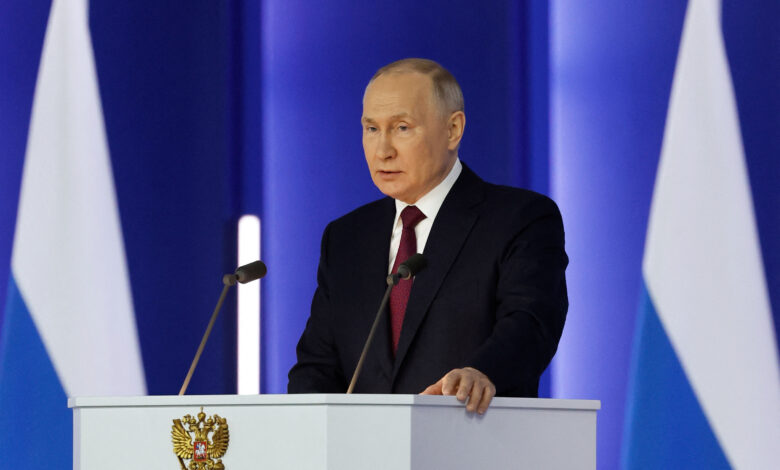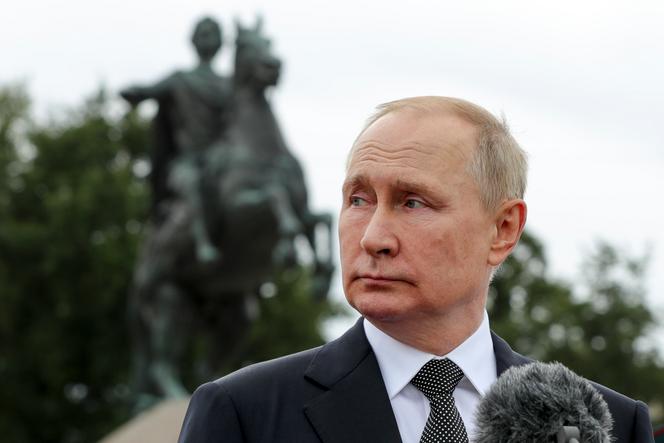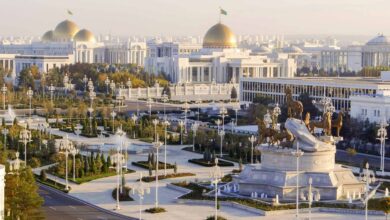Putin Announces New Policy On Russian Use Of Its Vast Nuclear Arsenal, A Dangerous Direction?
In a dangerous escalation of nuclear rhetoric, Russian President Vladimir Putin has announced significant changes to Russia’s nuclear doctrine, outlining a lower threshold for the use of atomic weapons. In a televised meeting with Russia’s Security Council, Putin summarised the revisions, stating that Moscow could respond with nuclear force even in the case of a conventional attack, provided it posed a "critical threat" to Russian sovereignty. The new direction has raised global concerns as it coincides with the ongoing war in Ukraine and aggravated tensions between Russia and the West.

Russia’s President Vladimir Putin has made major revisions to the country’s nuclear doctrine, lowering the bar for the deployment of atomic weapons, in a potentially deadly uptick in nuclear talk.
Vladimir Putin summarized the changes in a live discussion on television with the Russian Security Council, saying that if a conventional strike presented a “critical threat” to Russian sovereignty, Moscow might still use nuclear force to defend its interests.
Due to the current conflict in Ukraine and the aggravated tensions between Russia and the West, the new course has sparked concerns throughout the world.

Redefining Nuclear Weapons Application
Putin underlined that any assault on Russia by a non-nuclear state would be considered a “joint attack on the Russian Federation” if it was carried out with the assistance or participation of a nuclear power under the proposed modifications.
There are concerns that tensions between nuclear-armed countries may rise as a result of the new, more expansive interpretation, which essentially lowers the bar for when Russia might use nuclear weapons.
Putin has set a potentially hazardous precedent by emphasizing that Russia will use nuclear weapons in response to a conventional attack that presents a “critical threat” to the nation’s sovereignty.
However, given that Putin made references to the fast-deteriorating geopolitical situation, it appears that Russia’s nuclear posture has changed in response to his willingness to take into consideration the swiftly evolving global threats.
In 2022, the United States showed concern over the potential use of tactical nuclear weapons by Russia.
CIA Director Bill Burns stated that the U.S. had warned Russia about the severe consequences of such actions. Together, Russia and the U.S. control 88% of the world’s nuclear arsenal, according to Reuters.

The Undeniable Ukraine Factor
Now in its third year, Russia’s military might notwithstanding, Moscow is doing very little in the conflict against Ukraine.
On the other side, Kyiv’s forces have targeted Russian territory with missiles and drones in a number of counterattacks, including an unexpected entry into the Kursk region of Russia.
Therefore, it’s possible that these events had an impact on Russia’s choice to update its nuclear doctrine.
As a result, Western nations must now carefully consider how much help they are willing to give Ukraine’s armed forces without risking a disastrous Russian reaction.
Notably, since the start of the conflict in Ukraine, Putin’s use of nuclear threats has become a defining feature of his communication tactics.
Additionally, he has halted Russia’s involvement in the New START treaty, which limits the number of deployable nuclear warheads shared between the US and Russia, further emphasising Moscow’s increasing reliance on nuclear posturing.
Is this a Real Threat or Nuclear Blackmail?
Putin’s threats have been brushed off by Ukrainian President Volodymyr Zelenskyy and his cabinet, who refer to them as “nuclear blackmail.”
According to Andriy Yermak, chief of staff of Zelenskyy, Russia’s only remaining weapon of mass intimidation is its nuclear weapons, and even that wouldn’t be effective.
However, Putin’s updated nuclear doctrine raises doubts about whether Russia will heed its warnings and adds more ambiguity to an already tense situation.
Commentators from international think groups have expressed alarm about this updated nuclear policy.
Putin’s extreme precision regarding the circumstances under which nuclear weapons might be used appears to be intended to incite further fear among Western nations, according to the Institute for the Study of War.
Similarly, Samuel Charap, a senior political scientist at RAND, warned that it is never a good sign when a major nuclear power loosens the conditions for deploying nuclear weapons, regardless of whether it is perceived as a bluff or not.
Extending the Nuclear Umbrella to Belarus
An additional point of concern is that Russia’s revised nuclear doctrine extends its nuclear umbrella to Belarus.
Putin’s long-time ally, President Alexander Lukashenko of Belarus, has allowed Russian troops to use Belarusian territory to invade Ukraine and has permitted the Kremlin to deploy tactical nuclear weapons in the country.
This move not only reinforces Russia’s strategic reach but also brings the threat of nuclear conflict closer to NATO’s doorstep.
With Russia and the US controlling a staggering 88 percent of the world’s nuclear warheads, any shift in Moscow’s nuclear policy has global ramifications.
While Putin’s doctrine revisions may be aimed at deterring Western support for Ukraine, they also significantly raise the stakes in an already dangerous geopolitical environment.

The Global Implications
Russia’s revised nuclear doctrine stresses the fragility of the current international order—by potentially lowering the threshold for using nuclear weapons, Putin has introduced greater uncertainty into the calculus of war.
The ongoing conflict in Ukraine and Russia’s attempts to deter Western nations from providing more advanced weapons to Kyiv spotlight the precarious balance between conventional warfare and the threat of nuclear escalation.
As Western powers continue to support Ukraine’s fight for sovereignty, they must digest this new reality carefully. While Putin’s threats may seem like an extension of his longstanding nuclear rhetoric, the revisions to Russia’s doctrine cannot be dismissed lightly.
The world is watching closely, and the consequences of any miscalculation could be catastrophic.
The Last Bit, Putin’s latest revisions to Russia’s nuclear doctrine send a clear message to the world: Moscow is willing to reshape the rules of nuclear engagement in response to perceived threats.
Whether this shift is a strategic bluff from Putin or a genuine lowering of the nuclear threshold remains to be seen, but it undoubtedly raises the pressure for global security.
As the conflict in Ukraine continues to evolve, the international community must prepare for a future where the lines between conventional warfare and nuclear deterrence are increasingly getting blurred.




